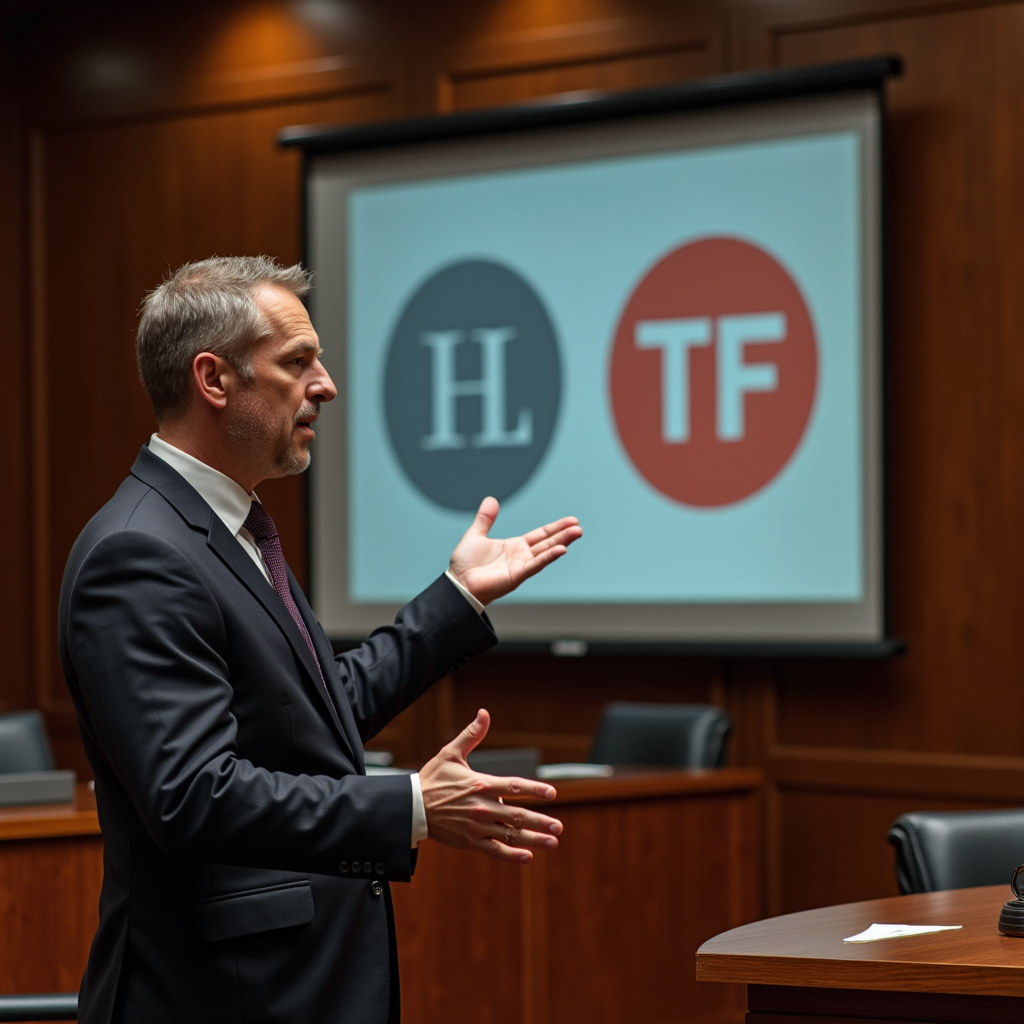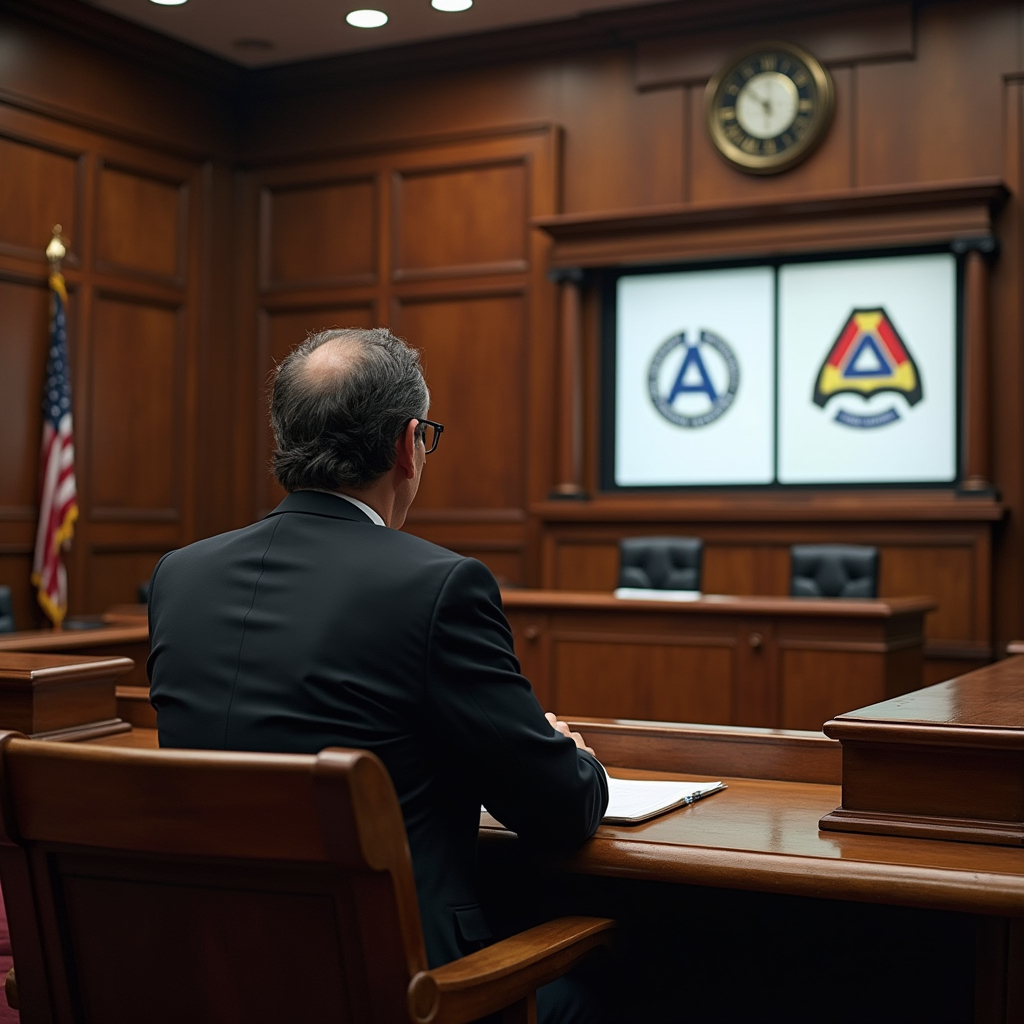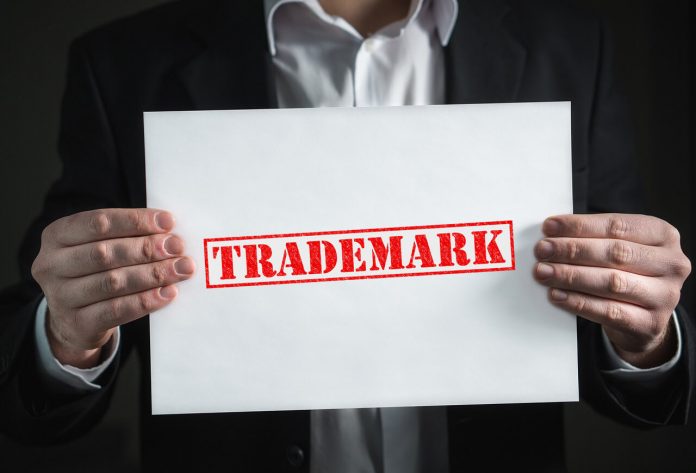This article is written by Sowbhagyalaxmi S. Hegde. It emphasises on the detailed analysis of the trademark opposition proceedings. In this article, we will go through the procedure of the trademark opposition, from filing to hearing and also discuss the grounds for the opposition under the Trade Marks Act, 1999. By following structured guidelines, we can understand each stage of the opposition process, including the role of both parties, their evidentiary responsibilities, and the potential outcomes.
Table of Contents
Introduction
A trade mark is a sign, logo or any expression that is capable of distinguishing goods or services. A trade mark is a pivotal tool that provides security to the brand and also an assurance to consumers, which provides trust in the product or service. In this competitive world of business, trade marks play an important role in establishing the brand; they also protect the intellectual rights of a business. For example, TATA Steel, Chrome, etc. are brand names that establish trust and loyalty towards the brand.
To protect the trade mark, there is a legal procedure known as ‘trademark opposition’. Trademark opposition occurs during the trademark application stage. It takes place when the mark has been published for any opposition in the official trade mark journal. The opposition of trade marks is important to prevent the registration of trade marks that could infringe upon the existing trade mark rights, which may cause confusion to consumers or it may create a contravention to public policy. Here, the third parties are allowed to file the objections, so the trade mark opposition process serves as a security to the specific brand in maintaining the integrity and distinctiveness of the trade mark, and it ensures that only valid and lawful trade marks get protection.
Who can oppose a trademark
The Trade Marks Act, 1999, provides procedures for the registration of trademarks in India. The Trade Marks Rules, 2017 provide the provisions relating to the application for the trade mark registration. There is a particular form, known as Form TM-A, where the owner of the brand can apply for the registration of the trademark. After receiving the application for registration, there is a publication in the Trade Mark Journal. Under Section 21 of the Trade Marks Act, 1999, any person who already has a similar brand name (irrespective of whether it is registered as a trademark or not), companies, trusts, and partnership firms have an opportunity to oppose the application by filing a notice of opposition with the Trade Mark Registrar within four months of the trademark’s publication in the Trademark Journal. The trademark opposition is filed in the notice of opposition form, known as FORM TM-O.
Grounds on which trademark registration can be opposed
Absolute grounds
Section 9 of the Trade Marks Act, 1999, provides absolute grounds for refusal of trade mark registration. They are as follows:
- Where the mark lacks any distinctive character, it means that the goods or services cannot be distinguished from one person to another;
- Where the mark consists of any particular sign or indication that describes the type, quality, quantity, value, or geographical origin. Production time or any other characteristics of goods or services;
- Where the mark shows any exclusive signs or indications that become customary;
- Where mark is able to confuse the public or cause confusion;
- Where the marks contain or comprise matter that could hurt the religious faith of any class or section of Indian citizens;
- Where the marks comprise or contain scandalous or obscene matter;
- Where the mark is prohibited as per the Emblems and Names (Prevention of Improper Use) Act, 1950.
Relative grounds
Section 11 of the Trade Marks Act, 1999, provides relative grounds for the registration of a trade mark:
- Where the mark is similar or identical with an earlier trademark and there is a likelihood of confusion or association with the earlier trademark due to the similarity of the goods or services;
- Where the mark is similar to an earlier trade mark and the identity or similarity of the goods or services it covers creates a likelihood of confusion or association with the earlier trademark;
- Where the mark is identical or similar to an earlier well-known trade mark in India, and the use of the new mark without due cause would take unfair advantage of or harm the distinctive character or reputation of the earlier trade mark;
- Where the mark is intended for goods or services that are not similar to those of the earlier well-known trade mark, but the use of the new mark without due cause would still take unfair advantage of or harm the distinctive character or reputation of the earlier trade mark;
- Registration is allowed only when the previous mark owner gives consent.
Opposition proceedings

In India, trade mark registration allows a third party to challenge the application of a trademark. When a party believes that there is any infringement of trade mark rights or that it causes confusion among consumers, a trademark opposition can be filed.
To file a trademark opposition as provided under Section 21 of the Trade Marks Acts, 1999, the following steps need to be followed:
Notice of opposition
Under Section 21(1) of the Trade Marks Acts, 1999;
- Within four months of the publication of the applied mark in the trademark journal, a notice is submitted by filling out Form TM-O to the Registrar;
- While submitting the opposition form, the required fee (which can range from Rs. 2,000 to Rs. 9,000 depending upon the number of grounds cited) is to be paid;
- Information about the application, the opposing party and the reasons for the opposition are included in the said Form.
Counter statement
Under Sections 21(2) and (3), after the Form is submitted, the Registrar sends a copy of the notice to the applicant within three months. The applicant must respond by filling out the counter statement in the Form TM-O within two months to the Registrar with a counter statement of the grounds on which he relies for his application, and if he does not do so, he shall be deemed to have abandoned his application. Once the Registrar receives a counter, he sends a copy to the person who filed the opposition.
Evidence
Under Section 21(4), once the counter statement is received by the Registrar he will review it and send a copy to the opponent within two months only if all the conditions are complied with. When the opponent receives the copy, they can provide evidence to support their opposition by giving an affidavit. Even the applicant then presents the evidence by denying the opponent.
Hearing
Under Section 21(5), when all the evidence has been presented to the Registrar, the case will be scheduled for a hearing before the hearing officer, and the hearing officer gives the final decision.
Security for Costs
Under Section 21(6), a person who is giving a notice of opposition or any counter statement by the applicant who resides outside India or whose business is not within the country, in this case the registrar may require them to provide security for costs of the proceedings. If such security is not provided, then the notice of opposition or the application may be treated as abandoned.
Correction of errors
Under Section 21(7), the registrar has the discretionary power to permit the correction of any error in or amendment of a notice of opposition or counterstatement; this is done only upon the request of the parties.
Filing of a notice of opposition
A notice of trade mark opposition is an official document that states that there is a disagreement or objection towards trademark registration by a third party. The main purpose of this opposition process is to safeguard the trade mark from causing confusion or deceiving others with similar trade marks.
The notice of opposition must contain the following components:
- An application number against which opposition has to be pursued and mentioned;
- The name of the trade mark applicant must be present;
- A list of goods and services in a trade mark application against which opposition is present must be indicated;
- If the earlier trade mark owner files an opposition, then his name, address and details of his trademark must be present;
- If the opposing party has no place of business in India, then the name of the opponent along with their address for services in India must be mentioned;
- If the earlier trademark is the basis of the opposition, then a statement to that effect, a status of indication, application number, filing date and the priority of the earlier trademark must be mentioned;
- If the earlier trade mark is well known, then the description of it along with the country details in which the earlier trade mark is registered must be there;
- The grounds of opposition must be clearly mentioned.
Upon the submission of the opposition to the Registrar, the Registrar reviews and observes the required documents, then serves a copy of the notice of opposition to the applicant of the trade mark within three months from the date of receipt, after which the applicant proceeds by filing the counter statement.

Upon receiving such notice of opposition, the applicant must submit a counter statement within two months from the date of receipt of the notice of opposition. Non-filing of the counter statement within the statutory period will lead to the applicant being abandoned by the Registrar.
Filing of counter statement
A counter statement is filed by the trade mark applicant in response to the notice of opposition filed by the opponent. The applicant files the counter statement as a formal document that responds to the allegations made by the opponents in the notice of opposition.
The applicant must file their counter statement to the notice of opposition to the registrar as provided under Rule 44 of the Trade Marks Rules, 2017 in the FORM TM-O within two months of receiving a copy of the notice by the applicant. The registrar will then forward counter statement received by the applicant to the opposite party within two months of receiving the counter statement.
In the counter statement the applicant may admit or deny the allegation made by the opponent in their notice of opposition. The applicant may also provide evidence and a detailed argument to support their trade mark application, as well as the denied grounds of opposition raised by the opponent.
The counter statement is an important step in the opposition process, as it allows the applicant to defend their application and present it to the trade mark officer. It is an important step because if the counter is not filed within the specified time, the application gets abandoned.
Evidence affidavit under Rule 45 of Trademark Rules, 2017
Under Rule 45 of the Trade Mark Rules, 2017, an affidavit is submitted in support of evidence by the opponent within two months of receiving their counter statement from the applicant. The affidavits, along with any exhibits, must be submitted to the Registrar, and copies should also be provided to the applicant.
The affidavit submitted as evidence must be in detail and it should adhere to the specific requirements. It should include information such as facts that support the opposition’s claims. It should also clearly state the deponent’s address and the particulars of the party filing the evidence.
If the opponent chooses not to file the affidavit and wishes to rely only on the facts stated in the notice of opposition, it should be informed to the Registrar and the applicant in writing within the prescribed time. There is an option to abandon the notice of opposition if the opponent fails to provide the evidence. Therefore, it is important for the opponent to follow Rule 45, so that it shows that there is a continuous opposition to the applicant’s mark. If the opponent needs additional time to file the evidence, the opponent may request a time extension prior to the deadline.
Evidence affidavit under Rule 46 of Trademark Rules, 2017

Rule 46 of the Trade Marks Rules, 2017 permits an applicant to file an affidavit with evidence to support their trade mark application within two months of the opponent filing their evidence. The applicant can also choose to rely on the counter statement or evidence already submitted.
Filing and serving evidence
- Timeframe: Within two months the applicant has to file evidence, and also the applicant can request the registrar if he needs any time extension of one month.
- Format of evidence: It typically provides a specimen for trade mark evidence. It shows how the trade mark is similar or confusing for the public.
- Waiver option: Applicants have the option to waive the filing of evidence and they can only rely on their counter statement or previously submitted evidence by informing the opponent and registrar in writing.
- Serving evidence: Here, the applicant serves a copy of their evidence affidavit to the opponent.
- Failure: Failure to file an evidence or waiver letter within the time frame can lead to the application being abandoned.
Evidence in support of opposition under Rule 47
The opponent, under Rule 47 of Trade Marks Rules 2017, may file reply evidence to the counter evidence filed by the applicant under Rule 46. The opponent has one month from receiving the Rule 46 evidence to submit their reply evidence. However, submitting the reply evidence is optional, and the opposition will proceed to a hearing if the opponent doesn’t wish to submit anything.
If the opponent doesn’t wish to file a reply under Rule 47, under Trade Marks Rules, 2017, the Registrar of Trademarks may consider the applicant’s statement and documents as admitted. This means that the opponent can’t challenge, comment or deny them during their hearing.
The opponent can also waive their rights to file reply evidence under Rule 47 and they have the option to rely solely on the opposition notice and evidence filed under Rule 45.

The Registrar has a discretionary power to allow or disallow evidence based on affidavits or oral testimony. Registrar also has the power to allow either the applicant or the opponent to submit additional evidence during the proceedings.
Conduct of the hearing
After the evidence stage is completed by both parties, the Registrar shall appoint a hearing date, and the parties are notified of the same. A request for adjournment of a hearing can be made by both parties. The requesting party has to provide a reason under Form TM-M with the prescribed fee of Rs. 900, and the requesting party has to provide it at least 3 days prior to the hearing date. Further, no party shall be provided more than two adjournments and this adjournment shall not be for more than 30 days.
However, it depends on the Registrar to accept such a request for adjournment. If the adjournment is accepted by the registrar, then it shall be intimated to the parties accordingly. If either party does not appear for the hearing at the specified time, the Registrar shall accordingly pass the order in favour of the other party. Such a decision of the Registrar shall be further communicated to the other parties in writing at the address of service as provided. However, if both parties attend the hearing at the specified time and date, the Registrar shall provide both parties with an opportunity to hear and review the evidence submitted; it is then determined whether the trade mark shall be registered or not, thereby bringing the proceedings to a final decision.
Benefits of trademark opposition
The benefits of trademark oppositions are essential in safeguarding the integrity of the business and ensuring the fair marketplace. Some of the additional highlights that benefit the trademark opposition.
- Protection of brand: Trademark opposition, which allows the business to protect their brand equity by preventing others from registering the similar marks. So, by this, it ensures that there is a unique identity in the marketplace.
- Prevention of consumer confusion: Opposing the potential confusion in trademarks, as it is crucial in maintaining the trust and loyalty of consumers who associate certain qualities and values with a particular trade brand.
- Hindrance against infringement: The oppositional process is an obstacle to potential infringers.
- Legal gain and clarity: Successful oppositions that set a legal gain and clarify the boundaries of trademark protections.
- Cost-effective: Engaging a trademark opposition can be more cost-effective than costly litigation to protect a brand.
- Reputation management: Opposing a trademark that could harm a brand’s reputation ensures that its reputation is not tarnished.
- Fair competition: Trademark opposition favours the fair competition by ensuring that businesses cannot fairly benefit from the goodwill and reputation of the established brands.
Judicial precedents and guidelines on trademark opposition
M/S Nandhini Deluxe v. M/S Karnataka Co-Operative Milk Producers Federation Ltd.
Facts of the case
In this case, the dispute arose over the trade mark “Nandhini.” The appellant is Nandhini Deluxe, a restaurant chain that wishes to register the trademark “Nandhini” for their food products. Here, the respondent opposed their registration on the ground of deceptive similarity to their registered trade mark, “Nandhini,” where the respondent sold milk and milk products.
Issues raised
- Whether the trade mark “Nandhini” is deceptive, similar to the respondent mark?
- Whether the trade mark “Nandhini” is able to cause confusion among average consumers?
Judgment
The Hon’ble Supreme Court of India said that the respondent was well known by the mark “Nandhini.” If the appellant used this mark, then it would cause confusion to the average intelligent consumer, as it is also similar to the respondent mark “Nandhini.” Therefore, the court held that the respondent has a full right over the mark and ruled against the registration of the appellant’s trade mark, “Nandhini.”
M/S. ITC Limited v. Nestle India Limited (2020)
Facts of the case
In this case, the appellant sued the respondent for using “Magical Masala” for the Maggi Noodles, which infringed the appellant trade mark “Magic Masala” used in the respondent product, i.e., Sunfeast Yippee Noodles. The appellant argued “Magic Masala” as a deceptive similarity with the trade mark association with its product, and the respondent argued that the term was common and that it just denoted the flavour and not a trade mark.

Issues raised
- Whether respondent’s use of “Magic Masala” is a passing off to the appellant trademark and misrepresenting their product?
- Whether the term “Magical Masala” has acquired distinctiveness?
- Whether “Magic Masala” is eligible for trade mark protection or is it simply descriptive?
Judgment
The Hon’ble Madras High Court favoured the respondent, saying that “Magic Masala” was simply descriptive and not eligible for trade mark protection. It was also said that there is no confusion between the two products as there is a clear branding difference.
Trademarks Opposition Board
The Trademark Opposition Board (TOB) is a regulatory body or authority that is responsible for overseeing and adjudicating trademark opposition proceedings. The purpose of the boards is to provide a platform for third parties to challenge the registration of trademark applications that they believe infringe upon their rights or cause confusion among consumers.
Overview of Trademark Opposition Boards in various countries
India
In India, the trademark opposition process is governed by the Trademarks Act, 1999 and the Trademarks Rules, 2017. Here, the opposition is filed before the Trade Marks Registry, which acts as the Trademark Opposition Board in India.
- Structure and it’s role: The Registrar of Trade Marks looks over the opposition process. Upon receiving the notice of opposition, the registrar examines the case by allowing both parties to submit their evidence and arguments and eventually conducts a hearing to decide the matter. The Registrar gives a final decision.
- Jurisdiction: The Registrar’s decision can be appealed before the Intellectual Property Appellate Board (IPAB).
United States
In the United States, the Trademark Opposition Board functions under the United States Patent and Trademark Office (USPTO), specifically as the Trademark Trial and Appeal Board (TTAB).
- Structure and role: The TTAB handles not only opposition proceedings but also cancellation proceedings and appeals related to trademark registration. Here, the opposition is filed by giving a notice of opposition, which is followed by a series of steps that include discovery, evidence submission and a hearing.
- Jurisdiction: TTAB decisions can be appealed in the United States Courts of Appeals for the Federal Circuit or challenged in a federal district court.
United Kingdom
In the United Kingdom, the Intellectual Property Office (IPO) functions as a Trademark Opposition Board. The IPO is the official government agency that manages intellectual property (IP) rights in the UK, including trademarks, patents, and designs.
- Structure and role: The UK IPO handles the opposition proceedings where third parties can challenge the registration of a trademark after it has been published in the Trademarks Official Journal. The process, which includes filing a notice of opposition, proceeds with the submission of the evidence and written arguments and if necessary, there can also be a hearing.
- Jurisdiction: decision by UK, IPO, which can be appealed to the appointed person or the High Court.
Canada
In Canada, the trademark opposition board operates under the Canadian Intellectual Property Office (CIPO).
- Structure and role: The Board receives an opposition notice against the trademark applications. The opposition process includes submitting a statement of opposition, counter statements, evidence and an oral hearing if required.
- Jurisdiction: the Board’s decision can also be appealed to the Federal Court of Canada.

Difference between trademark objection and trademark opposition
| S.No. | Particulars | Trademark objection | Trademark opposition |
| 1. | Initiation stage | Trademark objection, which is initiated immediately after the submission of the application to the trademark registration. It is objected at the initial stage of registration. | Trademark opposition is a stage after the trademark objection. |
| 2. | A person who initiates | A trademark objection is raised by the trademark examiner in the trademark application. | Any third parties can file a trademark opposition against the registration of the trademark. |
| 3. | Form of initiation | Examiner files a trademark objection in the form of a trademark examination report. | Any third party can file a form of notice of opposition. |
| 4. | Form of submission | The examiner submits a trademark objection in the report of the examination, which is proposed for trademark. The report and its status are viewed online. | Any parties who filed an opposition need to submit a notice of trademark opposition along with the evidence and reasons for the opposition of the proposed trademark. |
| 5. | Reply for an initiation | An applicant has to send a reply to an trademark registrar within a month of the receipt of the trademark objection to an examination report. | An applicant has to send a reply to a notice of opposition within two months of the receipt of the notice of opposition. |
| 6. | Appeal | Applicant can file an appeal if the application for a trademark is rejected even after sending the reply to the trademark objection. | Appeal lies against the judgment of the registrar in case of trademark opposition against the application of the trademark. |
| 7. | Fees | Applicant need not pay any fee for a reply to the trademark objection. | The applicant is required to pay the appropriate fee for submitting a reply to the notice of opposition. |
| 8. | Finality of the process | Once the trademark application is accepted after the finality of the trademark objection process, the trademark is published in the trademark journal. | When the trademark is accepted after the finality of the trademark opposition process, the judgment is communicated to the applicant and third party who applied for notice of opposition. |
Conclusion
Opposition ensures that the market’s path is clear, which will be free from the fog of confusion. Trademark opposition is one of the major stages in the trade mark registration process. As a trade mark is important for the business, to protect the mark is also an important step, and protection is provided in the form of trademark opposition. Trademark opposition is a procedure to protect distinctive trade marks and prevent the consumer from being confused. The trademark opposition proceeding depends on the procedural rules, including timing for filing the notice, counterstatement, and evidence submissions. Opponents or appellants must provide evidence to support their trademark, and it should also show that it doesn’t cause confusion, similarity or be made in bad faith. Procedural fairness ensures that there is a fair opportunity for the parties to present their case. Ultimately, the whole process seeks to uphold clarity and fairness in the marketplace by safeguarding the business from unfair competition and confusion.
Frequently Asked Questions (FAQs)
Can the decision of the Registrar be appealed?
Yes, the Registrar’s decision can be appealed to the Intellectual Property Appellate Board (IPAB) if either party disagrees with the judgement delivered.
What if opposition is not filed within the specified time?
If the opposition is not filed within four months, the trade mark application proceeds for registration.
Is there any fee for filing a mark opposition?
Yes, there is a fee for filing an opposition. But it varies according to the number of grounds cited and ranges from Rs 2,000 to Rs. 9,000.
What does a Registrar do in the trade marks opposition process?
The Registrar of trade marks goes through the opposition process, reviews the evidence submitted by the parties, conducts the hearing, and later makes a decision as to whether the mark should be registered or not.
References
- https://www.wipo.int/trademarks/en/#:~:text=A%20trademark%20is%20a%20sign,protected%20by%20intellectual%20property%20rights
- https://ipindia.gov.in/writereaddata/Portal/ev/TM-ACT-1999.html#s11
- https://ipindia.gov.in/administrative-steps-involved.htm#:~:text=Under%20opposition%20proceeding%2C%20a%20copy,the%20Intellectual%20Property%20Appellate%20Board
- https://www.ciprpf.com/trademark_opposition.php#:~:text=As%20per%20Rule%2045%20of,be%20deemed%20to%20be%20abandoned
Students of Lawsikho courses regularly produce writing assignments and work on practical exercises as a part of their coursework and develop themselves in real-life practical skills.
LawSikho has created a telegram group for exchanging legal knowledge, referrals, and various opportunities. You can click on this link and join:
Follow us on Instagram and subscribe to our YouTube channel for more amazing legal content.
 Serato DJ Crack 2025Serato DJ PRO Crack
Serato DJ Crack 2025Serato DJ PRO Crack










 Allow notifications
Allow notifications



